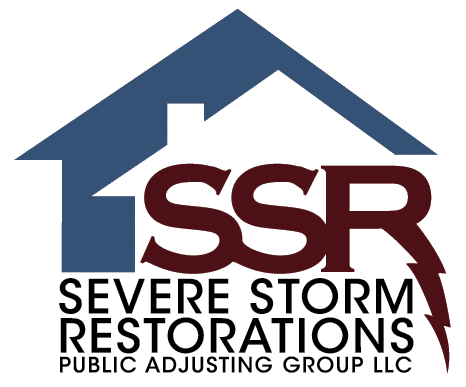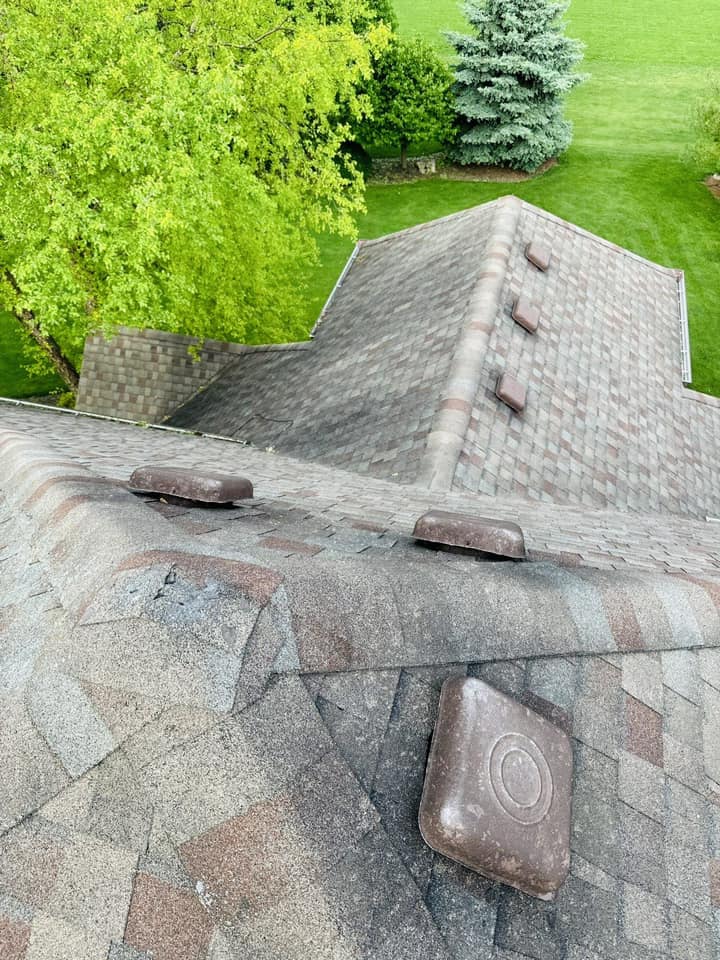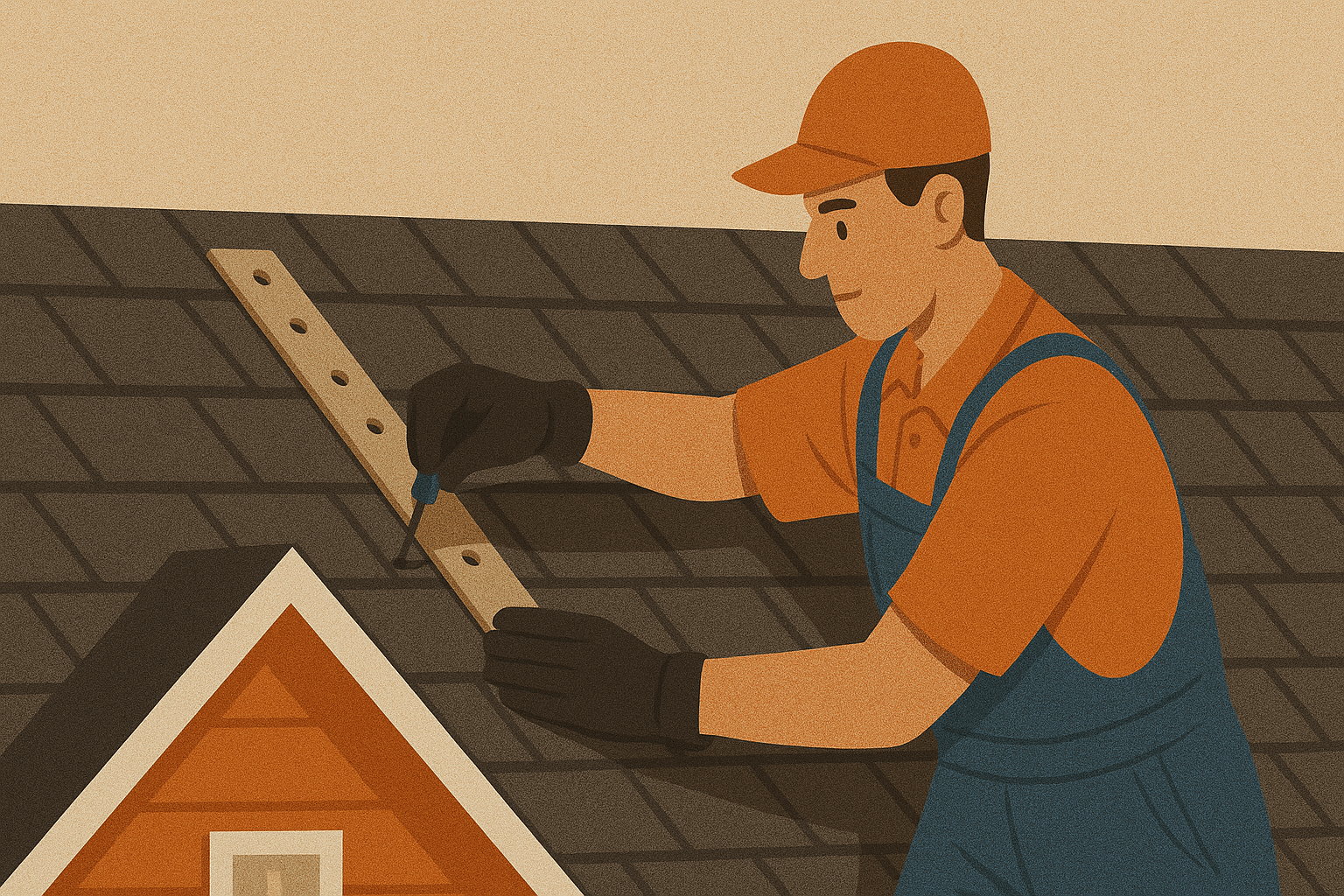Table of Contents
When a storm hits, it often leaves behind visible damage to roofs, siding, windows, and other parts of your property. From missing shingles to dented siding and broken windows, these issues typically get immediate attention due to their obvious nature. However, one critical aspect that often goes overlooked is the condition of the roof’s ventilation and insulation. These hidden yet essential components are crucial to the overall health and longevity of your roof, particularly after severe weather events.
Proper ventilation allows air to circulate through your attic, helping to regulate temperature and moisture levels. In contrast, insulation works to maintain a comfortable temperature inside your home or business by preventing heat transfer. Together, these systems ensure that your roof remains sturdy, energy-efficient, and capable of withstanding the elements. Neglecting ventilation and insulation after a storm can lead to a host of problems, including moisture buildup, mold growth, and structural damage that could compromise your roof’s integrity over time.
During post-storm roof repairs, it’s important to not only focus on the visible damage but also assess and address potential issues with ventilation and insulation. Storms can damage vents, disrupt airflow, and expose insulation to moisture, all of which can reduce the effectiveness of your roof system. By ensuring that these systems are properly maintained and repaired when needed, you can significantly improve the durability of your roof while enhancing your property’s energy efficiency.
In this article, we’ll delve into the importance of proper ventilation and insulation in post-storm roof repairs. We will explore the many benefits of maintaining these systems, how storm damage can affect them, and actionable steps you can take to ensure your roof is properly ventilated and insulated for years to come.
What is Roof Ventilation and Why Does It Matter?
Roof ventilation is the process of allowing air to circulate through your attic or roof space to prevent the buildup of heat and moisture. Proper ventilation involves a balanced system where cool, fresh air enters the attic through intake vents—typically located at the eaves or soffits—while warm, stale air exits through exhaust vents near the roof’s peak. This continuous airflow is crucial for regulating the temperature of your attic and preventing excessive heat in the summer and moisture accumulation in the winter.
During the summer, heat trapped in an inadequately ventilated attic can cause indoor temperatures to rise, making your air conditioning work harder and increasing energy costs. In the winter, poor ventilation can lead to condensation, which can damage insulation, encourage mold growth, and eventually lead to wood rot. Moisture buildup can also contribute to the formation of ice dams, which can further damage the roof structure. A properly ventilated roof helps mitigate these risks by maintaining a balanced temperature and moisture level year-round.
After a storm, proper roof ventilation becomes even more critical. Storms often leave roofs compromised with missing shingles, cracked vents, or water infiltration. Without adequate ventilation, trapped moisture from storm damage can exacerbate existing problems, leading to mold growth, wood rot, and damage to roofing materials. This is especially concerning after a storm when the roof may already be weakened. Addressing ventilation issues during post-storm roof repairs ensures that your roof can effectively prevent heat and moisture buildup, preserving the lifespan of your roof.
Neglecting ventilation repairs after a storm can shorten the life of your roof and lead to costly repairs down the road. Therefore, inspecting and ensuring your roof’s ventilation system is fully functional is a key step in any post-storm roof restoration process.
The Role of Insulation in Roof Health
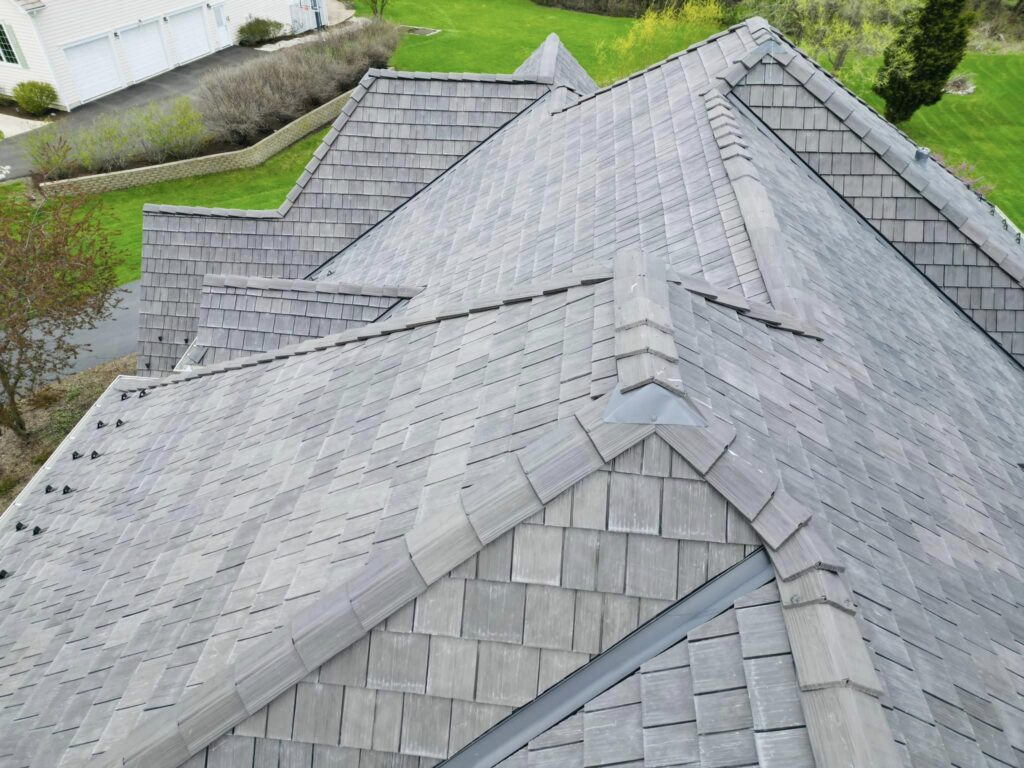
Insulation works hand-in-hand with ventilation to protect your roof and maintain a comfortable indoor environment. While ventilation helps control moisture and heat, roof insulation is responsible for regulating the temperature inside your home or building. Insulation acts as a thermal barrier, preventing heat from escaping during the winter and entering during the summer. By maintaining a consistent indoor temperature, insulation ensures that your HVAC system doesn’t have to work overtime, reducing energy consumption and lowering utility bills. A well-insulated roof can make a significant difference in both energy efficiency and comfort.
In addition to lowering energy costs, proper insulation plays a key role in extending the lifespan of your roof. It prevents excessive heat from accumulating in the attic, which can warp or weaken roofing materials over time. During colder months, insulation also helps reduce the risk of ice dam formation by maintaining a consistent temperature across the roof. In short, adequate insulation helps your roof perform better, reduces energy loss, and protects your property from weather-related damage.
After a storm, however, insulation is particularly vulnerable to damage. Moisture from rain, snow, or leaks caused by storm damage can seep into your insulation, rendering it less effective. Wet or compressed insulation loses its ability to regulate temperature and can even lead to secondary issues such as mold growth, which can affect both your roof’s integrity and the health of your indoor environment. Insulation that has been exposed to water no longer provides the necessary thermal resistance, which means your property could lose heat in the winter or become overly warm in the summer, driving up energy costs.
Addressing insulation issues during post-storm roof repairs is crucial to restoring the thermal efficiency of your home or building. If moisture has compromised your insulation, it should be promptly removed and replaced with new materials that provide the proper level of protection. By ensuring that insulation is properly restored, you can maintain the long-term performance of your roof, reduce future repair costs, and keep your energy bills in check
How Storm Damage Affects Ventilation and Insulation
Storms can cause both direct and indirect damage to your roof’s ventilation and insulation systems, often leading to issues that are not immediately visible but can worsen over time if left unaddressed. High winds, rain, hail, and flying debris can take a toll on your roof’s structure, damaging vents and allowing water to seep into the insulation. These hidden problems can compromise the overall health of your roof, leading to long-term issues like higher energy costs, mold growth, and structural damage.
Ventilation Damage: During a storm, debris such as leaves, branches, or even hailstones can clog intake and exhaust vents, preventing proper airflow through your attic. Without adequate airflow, your attic can trap heat and moisture, creating the perfect environment for mold and mildew to develop. In addition, strong winds can physically dislodge or damage the vents themselves, leaving gaps in the ventilation system. When vents are damaged or blocked, the roof cannot properly ventilate, leading to further deterioration of roofing materials and a reduction in your roof’s overall lifespan.
Insulation Damage: Heavy rain or hail during a storm can penetrate the roof, allowing water to seep into your attic. Once moisture reaches the insulation, it can quickly become soaked or compressed. Wet insulation loses its ability to regulate temperature, making it less effective at keeping your home cool in the summer and warm in the winter. In addition, damp insulation creates an ideal breeding ground for mold, which can lead to health issues and further damage to the structural integrity of your roof. If the insulation is not promptly dried or replaced, it can cause ongoing problems, such as energy inefficiency and higher utility bills.
If these ventilation and insulation issues are not identified and resolved during the post-storm repair process, the consequences can be far-reaching. Poor ventilation and wet insulation can drive up energy costs as your HVAC system struggles to compensate for the lack of temperature control. Over time, trapped moisture can lead to wood rot, mold growth, and even structural damage, which could require costly repairs in the future. Addressing these problems immediately after a storm ensures that your roof remains functional and energy-efficient, preventing larger issues down the road.
Signs of Poor Ventilation and Insulation After a Storm
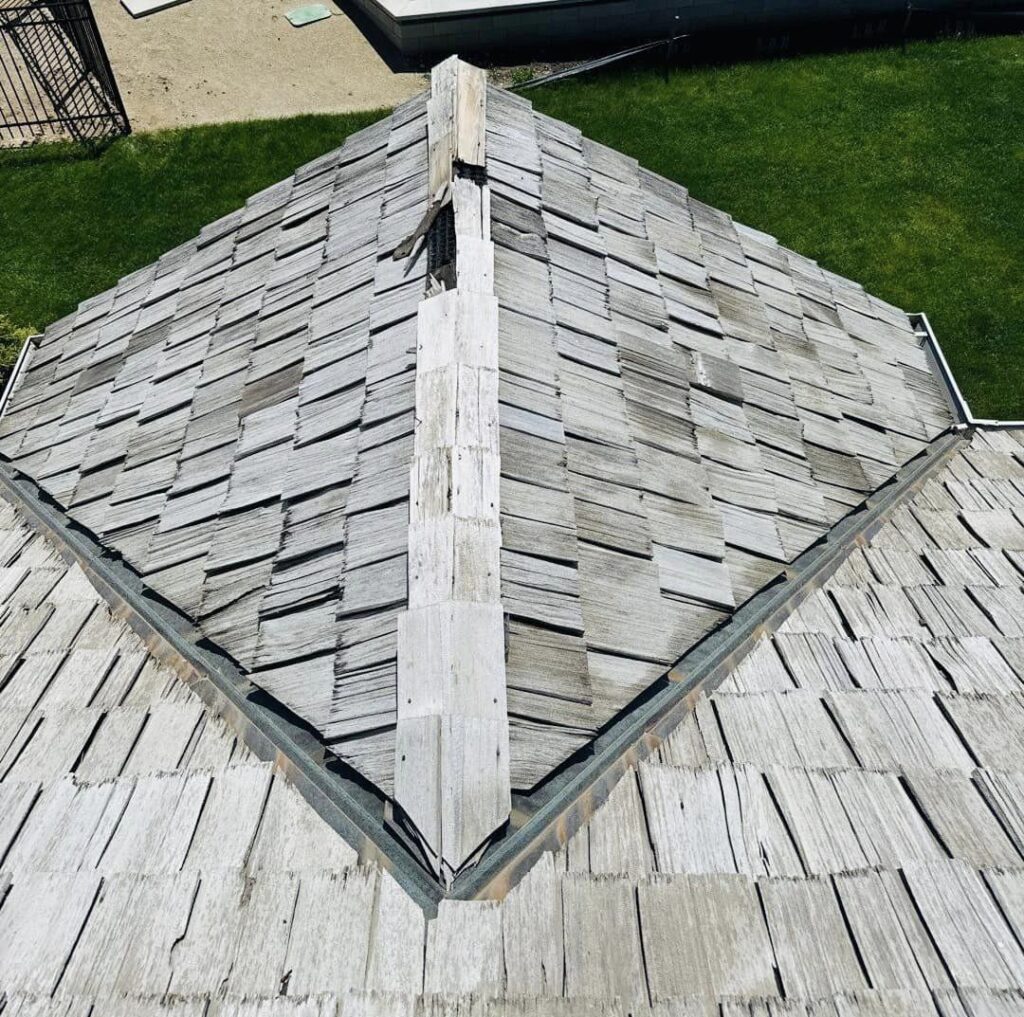
Recognizing the signs of poor ventilation and insulation is critical for protecting your property after a storm. Storms can cause both visible and hidden damage, and failing to address these issues promptly can lead to further complications. Identifying potential problems early allows you to take the necessary steps to prevent long-term damage to your roof and home.
Hot or Cold Spots: One of the most noticeable signs of poor insulation or blocked vents is significant temperature fluctuations in your home. If certain areas, particularly in the attic or upper floors, feel much hotter or colder than the rest of the house, it could indicate that insulation is no longer functioning effectively or that vents are blocked. These temperature imbalances are often a result of improper airflow or gaps in insulation, both of which can lead to increased energy usage and discomfort in your living space.
High Energy Bills: A sudden spike in energy bills after a storm is a red flag that your insulation may be compromised. If insulation becomes wet or damaged, it loses its ability to regulate the indoor temperature, forcing your HVAC system to work harder to maintain a comfortable environment. This inefficiency translates directly into higher energy costs, making it essential to inspect and repair any insulation issues as soon as possible.
Moisture Buildup: Excessive moisture or condensation in your attic, walls, or ceiling is a clear sign of poor ventilation or damaged insulation. When air circulation is restricted due to blocked or damaged vents, moisture can accumulate in the attic, leading to condensation. Over time, this moisture can weaken your roof’s structure and promote mold growth, posing serious risks to both your home’s integrity and your health. Proper ventilation ensures that moisture is vented out of your roof, preventing these issues from arising.
Mold or Mildew: The presence of mold or mildew in your attic or around roof vents is another indicator that your ventilation system is not functioning properly. Moisture buildup due to poor airflow creates the perfect conditions for mold to thrive. Mold not only damages your home but also poses significant health risks, especially for individuals with respiratory issues. If you spot mold, it’s essential to have your ventilation system inspected and repaired to stop further growth and protect your property.
Visible Damage to Vents: Sometimes the damage to your ventilation system is more obvious. Damaged, dislodged, or blocked roof vents can be easily spotted and are clear indicators that your ventilation system needs attention. Vents that are not functioning properly can lead to a host of problems, including moisture buildup, temperature imbalances, and reduced energy efficiency. After a storm, it’s crucial to inspect all roof vents for visible signs of damage and repair or replace them as needed.
Addressing these issues promptly is key to preventing further damage. Whether it’s replacing damaged insulation, clearing blocked vents, or repairing mold-related issues, acting quickly ensures that your roof remains in good condition, energy-efficient, and structurally sound.
Benefits of Proper Roof Ventilation and Insulation
Investing in proper ventilation and insulation during post-storm roof repairs offers several key benefits that can significantly improve the longevity, efficiency, and safety of your property. Ensuring these systems are functioning correctly after a storm helps protect your roof from further damage and enhances the comfort and energy efficiency of your home or building.
Extended Roof Lifespan: One of the primary benefits of proper ventilation is its ability to prevent the buildup of heat and moisture in the attic. Excessive heat can cause shingles to warp or deteriorate over time, while moisture can lead to wood rot, mold growth, and weakened roof supports. A well-ventilated roof allows hot, moist air to escape, keeping your roofing materials dry and extending their lifespan. By investing in ventilation during post-storm repairs, you safeguard your roof against future issues and prolong the life of your investment.
Energy Efficiency: Insulation plays a crucial role in maintaining your property’s energy efficiency. When insulation is properly installed and maintained, it acts as a barrier, preventing heat from escaping during the winter and entering during the summer. This helps to reduce the workload on your HVAC system, resulting in lower energy bills and a more eco-friendly building. After a storm, damaged insulation can cause significant energy inefficiencies, so it’s essential to inspect and repair or replace insulation as part of your post-storm roof restoration.
Prevention of Mold and Mildew: Moisture buildup in the attic is a common problem after a storm, especially if ventilation is inadequate. Without proper airflow, condensation can form, creating the perfect environment for mold and mildew to grow. Mold not only compromises the structural integrity of your roof but also poses serious health risks to the occupants of your home or business. By allowing moisture to escape through a well-ventilated roof, you minimize the risk of mold and mildew formation, which protects both your roof and indoor air quality.
Temperature Regulation: Proper insulation helps regulate the temperature inside your home or building throughout the year. During the winter, insulation prevents heat loss, keeping your indoor environment warm and reducing heating costs. In the summer, insulation keeps the heat out, ensuring that your cooling system doesn’t have to work as hard to maintain a comfortable temperature. By keeping your home or building well-insulated, you maintain consistent indoor temperatures, reduce energy usage, and enhance the overall comfort of your space.
By ensuring that your roof is properly ventilated and insulated, you not only protect your property from long-term damage but also increase its overall efficiency. This proactive approach can save you money on energy costs, prevent costly repairs, and improve the longevity of your roof, making it a wise investment for any property owner.
Types of Roof Ventilation Systems
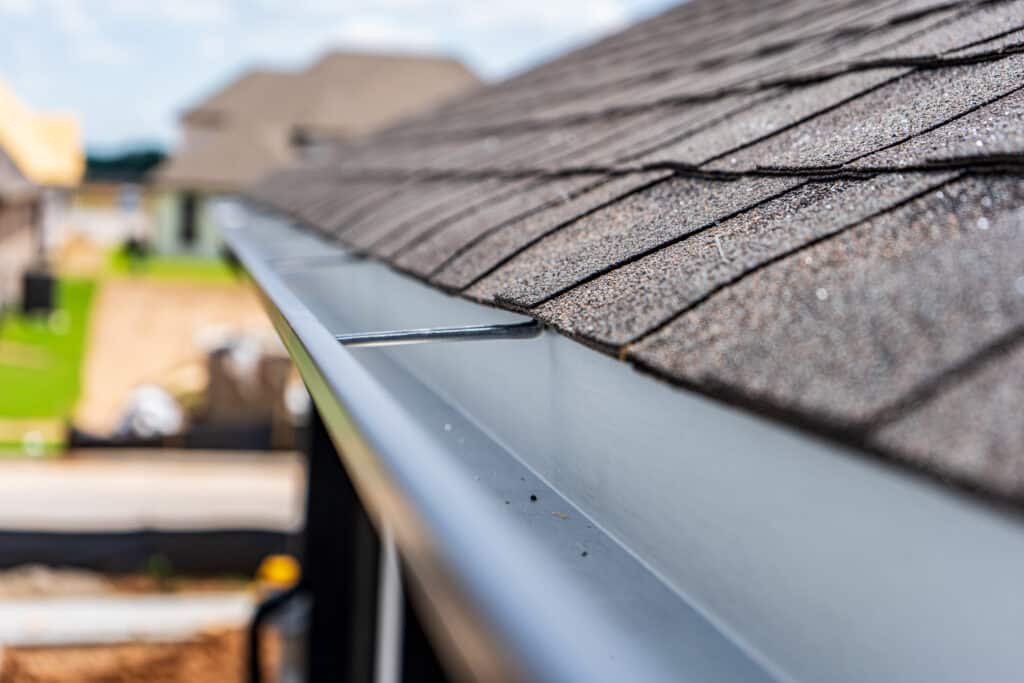
There are several types of roof ventilation systems, each suited to different types of roofs and climates:
- Ridge Vents: These vents are installed along the peak of the roof and allow hot air to escape from the attic.
- Soffit Vents: Located under the eaves, soffit vents allow cool air to enter the attic, promoting airflow.
- Gable Vents: Installed in the gable ends of the attic, gable vents allow for horizontal air circulation and help vent heat and moisture.
- Turbine Vents: These wind-powered vents help exhaust hot air from the attic, improving ventilation.
- Powered Vents: Electric or solar-powered vents actively remove air from the attic, improving ventilation in areas with limited natural airflow.
Choosing the right ventilation system for your roof is essential for ensuring proper airflow and protecting your property from damage.
How to Ensure Proper Insulation During Post-Storm Repairs
Proper insulation is crucial for maintaining your roof’s performance after a storm. Here are some steps to ensure your insulation is in top condition:
- Inspect for Moisture: Check your attic insulation for any signs of moisture or water damage. Wet insulation should be removed and replaced as it can no longer provide adequate thermal resistance.
- Choose the Right Insulation Material: Depending on your climate and roof type, different insulation materials may be more effective. Popular options include fiberglass batts, spray foam, and cellulose insulation.
- Seal Air Leaks: Insulation is most effective when air leaks are minimized. Ensure that any gaps around vents, chimneys, or other roof penetrations are properly sealed.
- Install Proper Ventilation: To prevent future issues, make sure that your ventilation system is functioning correctly. Ventilation and insulation should work together to regulate temperature and moisture levels.
Working with Professional Roofers for Ventilation and Insulation
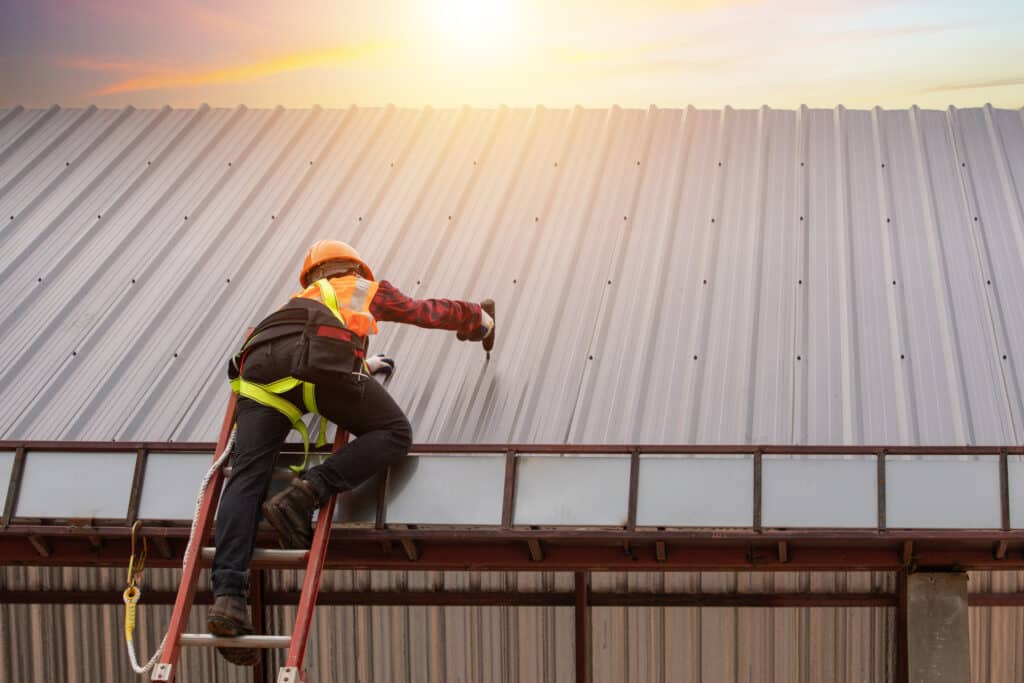
When repairing your roof after a storm, it’s essential to work with experienced roofers who understand the importance of ventilation and insulation. A professional roofer can assess your current ventilation and insulation systems, identify any issues, and recommend the best solutions for your roof.
Professional roofers will also have the expertise to install new ventilation systems or upgrade existing ones, ensuring that your roof is properly ventilated and insulated. This can save you money in the long run by preventing further damage and reducing energy costs.
Common Mistakes to Avoid
When addressing ventilation and insulation during post-storm repairs, avoid these common mistakes:
- Ignoring Insulation: Focusing solely on roof repairs without addressing damaged insulation can lead to ongoing energy inefficiency and moisture problems.
- Overventilating: While ventilation is crucial, too much ventilation can create issues, such as excess heat loss in the winter.
- Poorly Installed Vents: Vents that are improperly installed or not strategically placed can fail to provide adequate airflow, defeating the purpose of ventilation.
- Using the Wrong Insulation: Not all insulation materials are suitable for every climate or roof type. Make sure the insulation used is appropriate for your location and roof structure.
Conclusion
Proper ventilation and insulation are critical components of any roof, especially after a storm. When a storm damages your roof, it’s essential not only to repair the visible damage but also to ensure that your ventilation and insulation systems are functioning correctly. By addressing these elements during post-storm repairs, you can extend the life of your roof, improve energy efficiency, and protect your property from long-term damage.
At Severe Storm Restorations, LLC, we specialize in comprehensive post-storm roof repairs, including ventilation and insulation assessments. Contact us today at (855) 742-7663 or visit our website at severestormrestorations.com to schedule a professional inspection and ensure your roof is in top condition.
